
All Optical TestBed
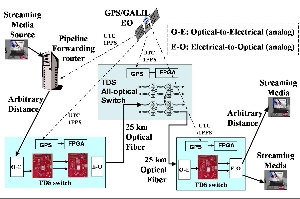
|
The objective of the all-optical switch in the TDS testbed is to provide a proof-of-concept. This has been successfully achieved by using semi-conductor optical amplifier (SOA) as ON-OFF optical switches. All-optical switches facilitate the following primary advantages:
- Eliminating the need for OE (optical-to-electronic) and EO (electronic-to-optical) conversions;
- Serial optical transmission up to hundreds of gigabit per second (Gb/s); and
- Interoperability with similar electronic TDS switches that are operating "without stopping the serial bit stream".
In the above testbed the all-optical switch is connected with two 25 km fiber links to two TDS electronic switches.
Since the TDS switch is time based it does not require a packed header decoder and does not need buffers. Specifically, routing decisions in the network is determine by global time or UTC (coordinated universal time), which facilitates scheduling and thereby almost complete elimination of optical buffers.
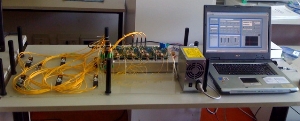
| 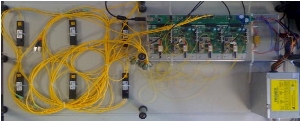
|
Theoretical Approach
With current technology, it is possible to connect input and output of the TDS switch with an array of all-optical switching components, which are electronically driven and controlled. In other words, the all-optical switches require an electronic control system, but the optical data carrier is routed without converting it into electrical signal. The all-optical routing enables the switch to be transparent to optical wavelength and data rate. If the current initial switch implementation is connected to operates at 1.25 Gb/s Ethernet (GE) at 1550nm, it can also operate at 10GE (and beyond) at 1550nm without any change to the all-optical switch configuration.
The switch consists of ON/OFF Semiconductor Optical Amplifiers (SOAs) interconnected in a network of (3db) passive optical couplers. The SOAs are driven electronically and can change their state in less than 1ns. UTC is available from many sources in space (e.g., GPS) and on earth (e.g., CDMA). The control mechanism (electronic-based) is the same as the one developed for the electronic TDS switch. All-optical TDS and transceiver based TDS can interoperate in the same testbed for performance evaluation and testing.
We have designed 2x2 non-blocking all-optical TDS, 4x4 low cost banyan and 4x4 non blocking all-optical TDS switch. We are going to plan the design and implementation of all-optical switches in a future testbed in the field, specifically, in Trentino Network as the “Underlay Super-highway” of WOTBL (wireless and optical testbed laboratory).
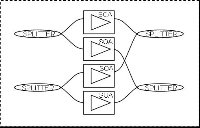
|
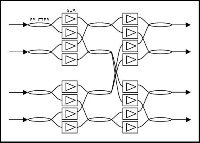
| |
| 2x2 non-blocking full optical TDS | 4x4 low cost full optical TDS |
Hardware realization
The first hardware implementation of all-optical swich solution is done for 2x2 non-blocking full optical TDS.The realization is shown in the following figured (click on it to enlarge)
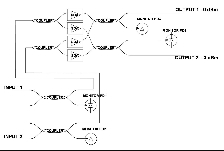 . .
|
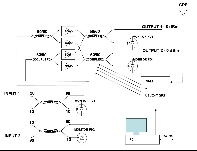
| |
| Overall of realization of 2x2 full optical TDS. | Details of realization of 2x2 full optical TDS. |
Here an overall description of the structure of all-optical testbed.
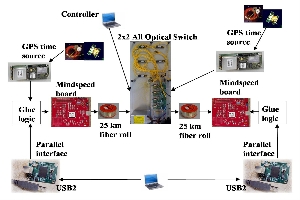
|
|
Pages hosted by "IP-FLOW Group" - DIT - Università di Trento - Italy. © IP-FLOW Project 2004, All Rights Reserved. Last updated: 2008-09-10 05:37:04 |
![[Italian]](images/uk.gif)


